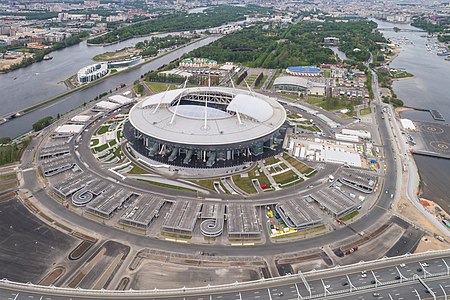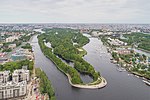Krestovsky Island

Krestovsky Island (Russian: Крестовский остров) is a 3.4 km2 island in Saint Petersburg, Russia, between several tributaries of the Neva: the Srednyaya Nevka, the Malaya Nevka and the Krestovka. The island is served by the Krestovsky Ostrov station of Saint Petersburg Metro. Until recently, the western part of the island was occupied by the Maritime Victory Park, where the international Goodwill Games of sports and athletics competition took place in 1994, which was the first large scale post-Soviet Union international event in Russia. A new stadium, Gazprom Arena, is located where Kirov Stadium was. The stadium serves as home for FC Zenit Saint Petersburg. Meanwhile, the eastern part of this beautiful St Petersburg island, has seen slow but steady urbanization since the early 1900s, which has slowly changed its parkland nature. Recently there has been even more pressure from today's "nomenclature" to locate top-end housing projects and high-prestige homes here - a long-time tendency that also continues today, since historically the island was always owned by families who were close to and favourites of the Tzars/"powers-to-be" and who served them well.
Excerpt from the Wikipedia article Krestovsky Island (License: CC BY-SA 3.0, Authors, Images).Krestovsky Island
Рюхина улица, Saint Petersburg Ostrova (округ Чкаловское)
Geographical coordinates (GPS) Address Nearby Places Show on map
Geographical coordinates (GPS)
| Latitude | Longitude |
|---|---|
| N 59.97 ° | E 30.26 ° |
Address
Рюхина улица 12
197110 Saint Petersburg, Ostrova (округ Чкаловское)
Saint Petersburg, Russia
Open on Google Maps









